Health in the Loft; Your’s, Not the Pigeons.
The subject of this article is your health and how to keep it.

You will hear the condition of interest called many things including Pigeon Fanciers’ Lung (PFL), Pigeon Breeders’ Lung (PBL), Bird Fanciers Lung (BFL) and Bird Breeders’ Lung (BBL), Pigeon Breeders’ Disease (PBD). PFL is the most accurate when dealing exclusively with pigeons. PBL implies that only breeders are affected, which is clearly not the case. Many pigeon fanciers have indicated that they experience typical symptoms in circumstances such as shows, an activity that has nothing to do with breeding 1.
PFL is a form of Extrinsic Allergic Alveolitis (EAA). The Americans call it Hypersensitivity Pneumonitis. EAA also affects people who keep other types of birds, particularly budgerigars in the house. Another form of EAA is “Farmers Lung”.
SYMPTOMS:
There are two distinct but overlapping phases of EAA, “acute” and “chronic”.
The acute phase is the most common in pigeon fanciers. Typically sufferers experience intense flu-like symptoms of fever, chills, muscle ache, cough and/or breathlessness four to eight hours after high level exposure to pigeons such as occurs when cleaning the loft or basketing pigeons. A medical practitioner may be able to detect lung abnormalities using a stethoscope and X-rays. Blood tests may reveal high levels of antibodies to pigeon proteins. The symptoms usually pass within 48 hours but may persist for a week or more. Although the attack itself will probably pass without treatment it is important to visit the doctor whilst symptoms are still present, preferably on the day of onset, as if you delay there may be no symptoms for the doctor to discover. It is important that sufferers are identified as early as possible to prevent progression to the more serious chronic stage of PFL. If detected and appropriate measures taken early enough, acute PFL is reversible.
Make sure you inform the doctor that you keep pigeons and exactly how long passed between exposure to pigeons and the onset of symptoms.
If not detected or ignored the acute phase may be followed by the chronic phase which is characterised by a type of irreversible lung damage the doctors call “pulmonary fibrosis”. This is very serious and in extreme cases may be fatal. The major symptoms detectable by the layman are breathlessness on exertion, cough and weight loss, which can be considerable.
If you think you might be affected do not panic. Seek medical advice. The doctor should order a number of tests to determine what the problem is. Remember that there are many other possible causes for your symptoms besides your pigeons. Make sure that your doctor has considered the alternatives as well. Do not be afraid to ask for a second opinion.
CAUSES:
It was not until 1965 that Pigeon Fanciers’ Lung was first described in the scientific literature 2. Since then considerable research has been done into this and other forms of “Bird-Breeders’ Lung” and new material continues to be published.
There are several schools of thought in the scientific community about the precise disease mechanisms. None of them have been conclusively proved. There is however general agreement that pigeon fanciers are a high risk group and that inhaling pigeon materials causes PFL to develop in some susceptible individuals. Other fanciers with similar exposure to pigeons do not develop the disease. There is no reliable method to predict who will be affected and who will not. Hopefully the scientists will eventually develop a reliable method but so far they have not. Until they do everyone exposed to pigeons should consider themselves at risk and take precautions to minimise the amount of pigeon materials they breathe in.
Exactly which pigeon materials cause the disease has not yet been proved. The leading contenders are droppings and feather bloom, but whatever the cause, the most important characteristic is that the particles must be small enough for a high proportion of them to reach and be deposited in the gas exchanging region of the lungs. For this to happen they must be less than 5 microns in diameter. A micron is one thousandth of a millimetre. For practical purposes this means that the particles with the potential to cause problems cannot be seen with the naked eye. Bloom particle size has been measured at approximately 1 micron 3.
Every flyer has his or her own management methods. This paper cannot discuss them all. As you read this guideline consider what you do that puts you in a position where you may be breathing in pigeon materials.
COMMON RISK SITUATIONS:
Loft Cleaning: Do not allow droppings to build up. Remember that it is the particles you can’t see that are the most dangerous. The best way to remove dust is with a vacuum cleaner. It may be necessary to fit a filter over the cleaner’s air exhaust to prevent dust simply passing through the machine and being pumped back into the loft. Wash the inside of the loft out periodically with a hose (after removing the birds). Do this first thing in the morning on a fine day so that it has time to dry. Don’t forget the stock loft.
Handling Pigeons: Anyone who has handled pigeons, particularly racing homers, is familiar with what Colin Osman 4 calls “the dust which soils waistcoats”. This is particularly noticeable on race basketing days at the club when birds have been individually examined at home and then again at the club. This material on clothing and hands is readily transferred to the breathing zone and then inhaled. See the section on protective clothing.
Releasing Birds for Exercise: Each downbeat of a bird’s wings creates a powerful downdraught of air, consequently spreading dust. A recently published study 5 has found that when the flock is liberated for exercise the combined beating of all those wings as they leave their perches and strain for altitude stirs up any dust in the loft and it does not return to normal levels for ten to fifteen minutes.
The implications of this finding are that you should:
leave the immediate area of the loft as soon as you release the birds, not return until the dust has settled, wear a mask if you have to go into the loft for any reason in this period.
Feather Sheath Particles:
In breeding lofts where fast growing youngsters are located, and in all lofts during the annual moult, feather sheath particles occur in large quantities significantly increasing the amount of material in the loft environment.
Transport of Pigeons:
Inhalation of pigeon materials must be avoided wherever they occur. However, many flyers who keep their lofts scrupulously clean will sit in a closed car for hours with dozens of pigeons when going for a toss.
In an ideal world we would all have special vehicles for our pigeons. A utility where the humans and pigeons ride in completely separate compartments of the vehicle is ideal. However in the real world most of us have to make do with the same vehicle we use every day. Nevertheless there are steps which can be taken to minimise exposure when tossing:
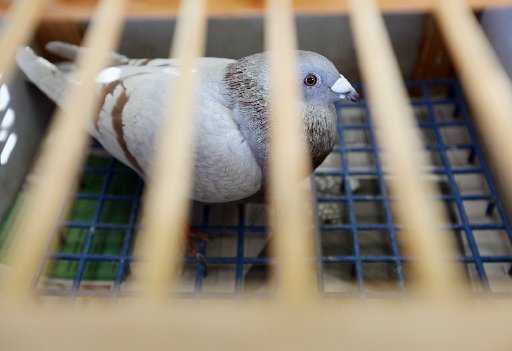 Keep crates clean. Do not allow dust and feathers to build up. Periodically wash them out with water. Put the birds in the car just before you leave and remove the empty crates from the car as soon as you return home. Keep to an absolute minimum the time that birds are in the car. When birds are in the car maximise ventilation. Arrange airflow to carry pigeon materials away from your breathing zone. The best way to achieve this will depend on your vehicle. As a guide the following has been found to work well in the author’s station wagon when carrying just the driver and birds. The driver’s side windows are closed and both passenger’s side windows partly opened. Dashboard air vents, which draw fresh air directly from outside the vehicle are aimed into the driver’s breathing zone and the fan turned to its highest setting. Do not allow dust to build up. Vacuum the vehicle interior immediately following the transportation of birds. Use low dust fillings in the crates (see “Loft Litter” below). Individuals who have had previous acute attacks of PFL it may find it necessary wear a mask when transporting pigeons in their car.
Keep crates clean. Do not allow dust and feathers to build up. Periodically wash them out with water. Put the birds in the car just before you leave and remove the empty crates from the car as soon as you return home. Keep to an absolute minimum the time that birds are in the car. When birds are in the car maximise ventilation. Arrange airflow to carry pigeon materials away from your breathing zone. The best way to achieve this will depend on your vehicle. As a guide the following has been found to work well in the author’s station wagon when carrying just the driver and birds. The driver’s side windows are closed and both passenger’s side windows partly opened. Dashboard air vents, which draw fresh air directly from outside the vehicle are aimed into the driver’s breathing zone and the fan turned to its highest setting. Do not allow dust to build up. Vacuum the vehicle interior immediately following the transportation of birds. Use low dust fillings in the crates (see “Loft Litter” below). Individuals who have had previous acute attacks of PFL it may find it necessary wear a mask when transporting pigeons in their car.
Loft Litter:
The same recently published study referred to above 5 found that lofts using the deep litter method had significantly higher levels of pigeon materials than lofts cleaned regularly (usually daily). Litters used in the studied lofts included hay, woodchips, sawdust or sand to which lime may have been added. Further testing was done in a purpose built experimental loft using sand, sand and lime, woodchips, woodchips and lime, hay and sepolite. Highest counts were observed for sepolite, lowest for wood/lime as litters.
Other Hazards:
Be aware that other materials in the loft environment can also cause respiratory problems. Nesting material, shavings and grain dust to name just a few can cause problems just as serious as pigeon materials and need to be controlled or protected against.
HOW TO MINIMISE YOUR EXPOSURE:
Loft Design: Health and Safety professionals employ personal protective equipment to prevent ill health only as a last resort. Before resorting to respiratory protection devices you should consider if you can adopt “engineering” solutions to solve the problem. Designing lofts to minimise the amount of pigeon materials in the fancier’s breathing zone should be the first strategy employed to minimise the problem.
Many flyers spend a great deal of time and money devising means of improving airflow for the birds. Unfortunately, the classical solution as to what is good for the pigeons, stale air being vented at ceiling level, fresh air being introduced at floor level, is probably not that good for the flyer. The air is drawn in past the droppings, past the birds, through the flier’s breathing zone, and then expelled from the loft. Ideally the fresh air should pass through the flier’s breathing zone before coming into contact with any pigeon materials, including of course the birds themselves. Some form of artificial direction of airflow would be necessary to achieve this. Fresh air, if necessary drawn through ducting from ground level, would have to be forced into the loft at ceiling level by mechanical means. Stale air should be extracted from the loft, taking as much dust as possible with it, at ground level. These exhaust vents should not be located anywhere near the intake vents.
The ease of implementing this will vary according the nature of your loft and the depth of your pocket. In warm climates where lofts usually have at least one wall that consists mostly of wire mesh or dowelling, ventilation engineering is difficult (but not impossible). In colder climates where the loft is frequently entirely enclosed ventilation control is much easier.
Self cleaning systems are now in use in some lofts. They range in sophistication (and price) from elaborate automatic machinery to the now increasingly common wire floored loft. The author is not aware of any research done in this area but they appear attractive both from the health viewpoint as well as a significant time saving device. You need to remember that any system is only as good as its maintenance. The droppings etc. eventually wind up somewhere however they are removed from the loft. Make sure that you are not just shifting the problem from one area to another instead of solving it.
Lofts should be designed so that there are no areas where dust can become trapped and build up. In particular ensure that perches are not fitted flush to the wall. Leave sufficient space so that any pigeon materials deposited at the rear of the perch can drop to the floor.
Personal Protective Equipment:
 Respiratory Protection (Masks): A small scale study (six subjects) published in 1981 6 indicated that respirators “can offer substantial, and in most cases, complete protection against single exposures to environmental dusts that may provoke EAA.” This study is encouraging but needs to be verified and extended by a larger scale study.
Respiratory Protection (Masks): A small scale study (six subjects) published in 1981 6 indicated that respirators “can offer substantial, and in most cases, complete protection against single exposures to environmental dusts that may provoke EAA.” This study is encouraging but needs to be verified and extended by a larger scale study.
Masks come in a variety of shapes, sizes and types. It is vital that you get the correct type and that it fits you exactly. Even small leaks around a mask can result in exposure . For this reason the masks need to fit snugly. There is no point in wearing an ill fitting mask. Masks are designed to protect the wearer from specific hazards. Ensure that the one selected for use with pigeons is designed to protect the wearer against “dust”. A mask designed to protect against other hazards will not protect against the inhalation of pigeon materials.
Unfortunately there are a number of sub-standard devices on the market which look good but do not offer adequate protection. The best way of checking that you have the correct type is to ensure that the mask chosen is designed for protection against “dust” as defined in Australian /New Zealand Standard 1715-1994 7 or international equivalent (Editors note: As this document will be viewed world wide, we cannot provide the equivalent standard for each country. To be safe please follow Mr. Gleeson’s advice. The safety supply dealer who sells you the mask should be able to provide the appropriate information)
Storage of respirators is important. They must be kept in a location where there is no possibility of them being contaminated. A large dose of contaminant can be inhaled if the inside of the mask is unclean. It is pointless to wear a mask as protection from materials that are inside the mask.
Beards and moustaches can create difficulties in achieving a proper fit. If you have one it may be necessary to wear a different type of device. Under these circumstances it is advisable to go to a reputable supplier of industrial safety equipment and be personally fitted.
Masks however have the disadvantage of being uncomfortable and of not being worn. Even with the best intentions it is difficult to remember to put the mask on every time the loft is visited. This is especially true if it is intended to be there for a few minutes to attend to a particular chore, or as frequently happens, one just arrives at the loft with no conscious forethought. Thus, whilst it is relatively simple to protect yourself with a mask when you know in advance that you will be exposed to large doses of antigen (e.g. during cleaning) this is not a viable long term strategy for protection against small but frequent exposures if it is not worn on each and every occasion.
Protective Clothing:
 Family members can be at risk from pigeon materials brought into the house on flyers’ clothing. There are recorded instances in the scientific literature of a flier’s wife contracting PFL even though she had nothing to do with the pigeons 8. The most likely explanation is that be contamination by pigeon materials brought into the house on the flier’s clothing is sufficient to affect another person exposed to the clothing.
Family members can be at risk from pigeon materials brought into the house on flyers’ clothing. There are recorded instances in the scientific literature of a flier’s wife contracting PFL even though she had nothing to do with the pigeons 8. The most likely explanation is that be contamination by pigeon materials brought into the house on the flier’s clothing is sufficient to affect another person exposed to the clothing.
The answer to this to wear an extra layer of protective clothing (overalls or a dust coat) when in the loft or handling pigeons and remove the clothing before entering the house. The contaminated clothes should be placed in a sealed container when not in use. Special easily removed footwear should also be used to visit the loft (e.g. a pair of thongs left outside the back door of the house.
The only time this protective clothing is taken into the house should be for washing. It should be taken direct to the laundry and washed immediately. Do not allow it to contaminate other clothing.
Personal Hygiene:
Pigeon materials also build up on the skin. You should wash your hands with soap and water after handling birds and shower after cleaning the loft.
Pigeon Behaviour:
The activities of the birds themselves can be a problem as they fly about inside the loft. Each downbeat of a bird’s wings creates a powerful downdraught of air, consequently spreading dust. Lofts should be designed so that as far as possible pigeons must walk rather than fly when moving about internally and cannot escape when you wish to catch them. Training pigeons to accept your presence in the loft can also substantially reduce this flying about. A bonus is that you will find that this training has a positive effect on their racing performance.
The flock instinct makes wild behaviour spread rapidly through the loft. The occasional idiot that flies madly about whenever you enter the loft should be eliminated.
Frequent Baths:
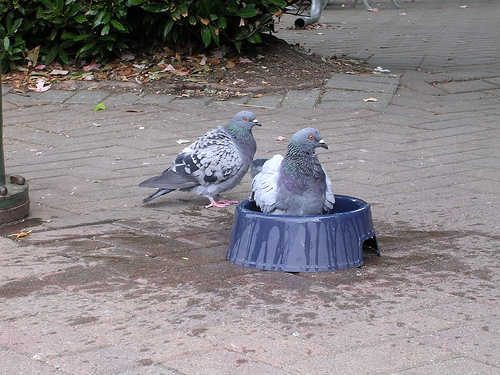 Provide baths as frequently as possible, preferably outside of the loft. This can substantially reduce the amount of atmospheric bloom in the loft. You cannot give the birds too many baths. They will regulate this themselves. There is one exception to this rule. Birds should not be permitted to bathe within three days of racing as they will not have sufficient wax in their wings to protect them should it rain.
Provide baths as frequently as possible, preferably outside of the loft. This can substantially reduce the amount of atmospheric bloom in the loft. You cannot give the birds too many baths. They will regulate this themselves. There is one exception to this rule. Birds should not be permitted to bathe within three days of racing as they will not have sufficient wax in their wings to protect them should it rain.
Health in the Loft; Your’s, Not the Pigeons. by: Gary Gleeson
The Leading Online Pigeon Racing and Racing Pigeons Magazine – The Pigeon Insider

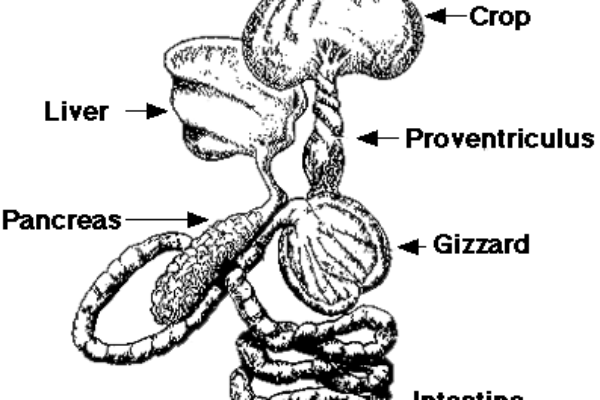

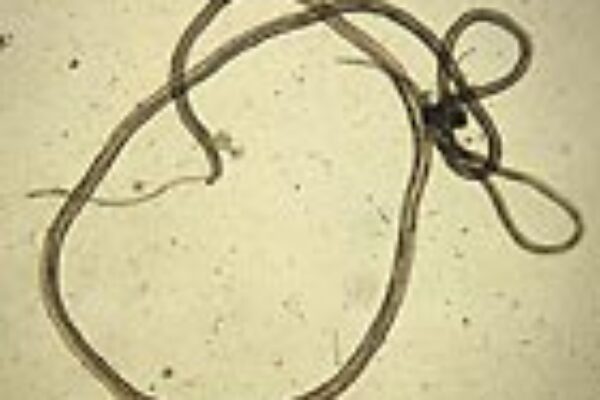

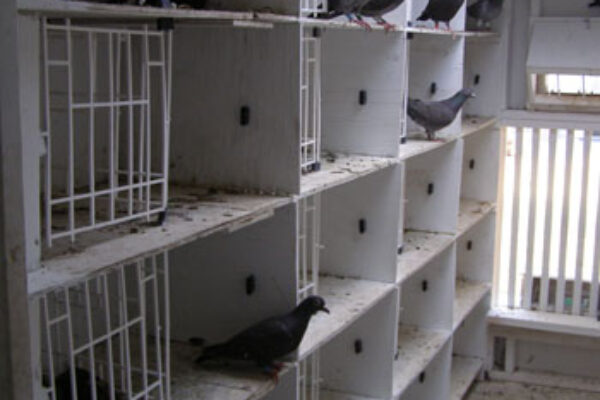
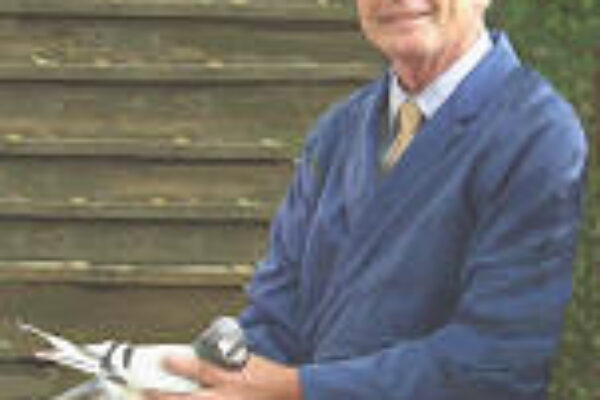


Thanks It was highly informative.
I’ve just joined this site and noticed my article is posted here. Feel free to ask me questions although please read the article carefully first as the answer you seek is probably already in it.
Nice srticle.
Very good article chris thanks there were a few new things i didn’t know about Brad.
Excellent and very informative article.
Excelente artículo Chris, la salud en nosotros: los aficionados a las palomas mensajeras es muy importante. Este tipo de afección se conoce como Hipersensibilidad Tipo III y tiene como característica principal la de causar una precipitación “in vivo” que puede causar inclusive la muerte.
El artículo deja muy claro las causas, pero al mismo tiempo señala como se pueden evitar estas mismas.
Saludos y que Dios los bendiga.